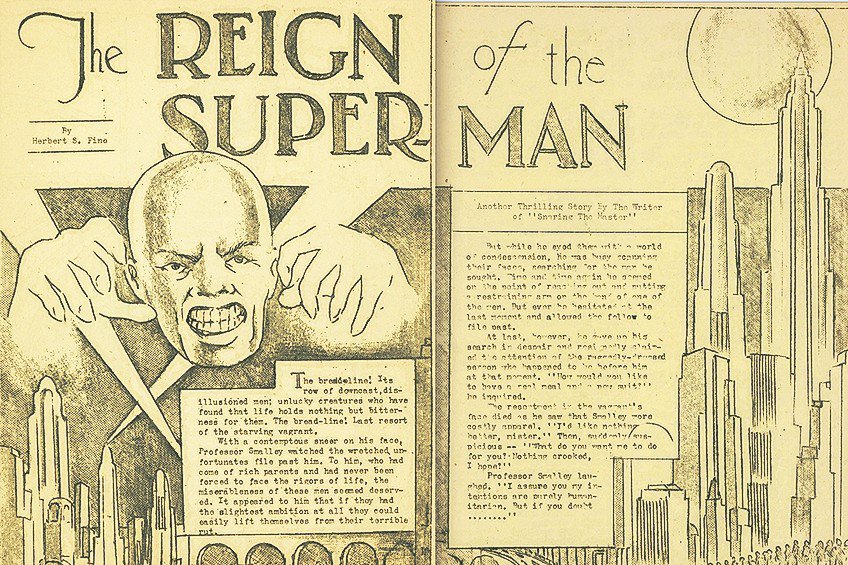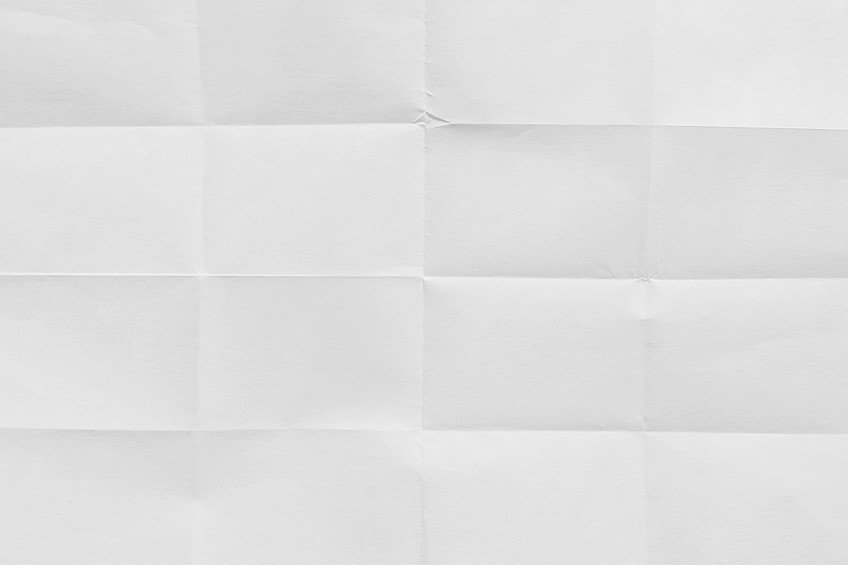What Is a Zine? – The Underground World of Self-Publishing
You might be thinking that a “zine” is a shortened term for the word “magazine”, and you will be correct. However, there are significant differences between these two forms of publication. To find out more about zines, we will be looking at what makes them different from other publication forms, and how you can create your very own zine. So, let us begin!
What Is a Zine?
A magazine is usually something that is done by a company for professional and commercial purposes. These magazines are also printed out on glossy and expensive paper, which is then distributed at a price. A zine, on the other hand, is something that is non-professional and self-published. Zines are often created by artists, writers, and other individuals, who have something important to say. Generally, zines are created by using collage techniques, where items are cut and pasted onto a surface. These creations are then photocopied into a leaflet-type book, which is then distributed to the public. The zine is not done for profit but is a way for an individual to express their point of view.
Often, these zines were used by the margins of society as a means of getting heard.
The zine can be produced by an individual or it can be a small group and usually involves only a small circulation of a few hundred copies or less, unlike the mass production of a typical magazine. The zine booklet can be any topic, size, or format, some are handmade by zine artists and others are created on the computer. The computer versions can be simple, or there are also flip-type magazine formats that are available. Zine artists can use various methods, such as screen-printing or they can hand stitch the binding and use various relevant images and text. There are quite a few more options available today than in the past when photocopying was the only way to produce a zine.
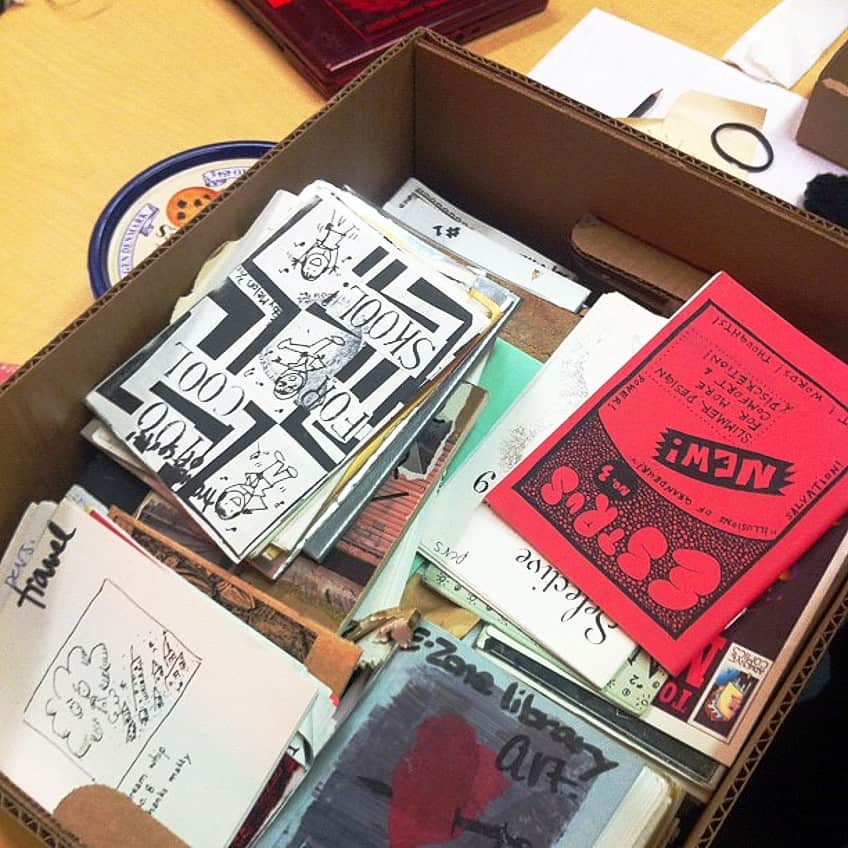
The various purposes of zines include sharing a story, ideas, poetry, art, and design. The purpose is to share your ideas and art skills. Many zine publications are produced by certain cultural groups, such as comics, literary, or musical genres. The zines are created to share with those who have similar interests. This particular zine was termed a “fanzine”, which was coined in 1940.
You might also come across the word “zinester”, which is simply another name for those who love creating zines.
History of Zine’s
One of the earliest zine publications was in the late 18th century, by political activist Thomas Paine. He self-published what he named Common Sense (1776), which included an argument for both economic and political separation from Britain. These ideas contributed somewhat to the U.S. War of Independence.
In the 19th century, Margret Fuller, an American journalist, and feminist belonged to a group known as the transcendentalists. Together with Ralph Waldo, an American Philosopher, they published an American Transcendentalist magazine known as The Dial (1840-1844) that contained poetry and articles by those who also belonged to the group.
1920s and 1930s
Later, in the 1920s, those from the black community in Harlem started a literary magazine, which became known as Fire (1926). The magazine focused on African-American art but was sadly only published once. However, many Black authors were inspired, and other “zines” began to pop up. Zines started to become more widespread during the 1930s through to the 1970s.
One of the more well-known zines from the 1930s in the United States was a “fanzine” publication that went by the name The Comet (1930) and was formed by the Science Correspondence Club.
The publications mainly consisted of science fiction and correspondence or letters from fans. During this time, photocopiers were not around yet, so a machine known as a mimeograph was used. This was a duplicating machine that produced copies from a stencil and remained in use until the 1970s. During this time, it was slowly replaced by the photocopy machine.
1940s
During this time, the fanzine culture took off, especially in the category of science fiction. As we have mentioned, the term “fanzine” was coined at this time by Russ Chauvenet, founder of science fiction fandom. One of his well-known fanzines was known as Detours (1940). During this time, other well-known authors contributed to the fanzine culture. There was Ray Douglas, a popular 20th-century American writer, and Jack Williamson, an American Science Fiction writer.
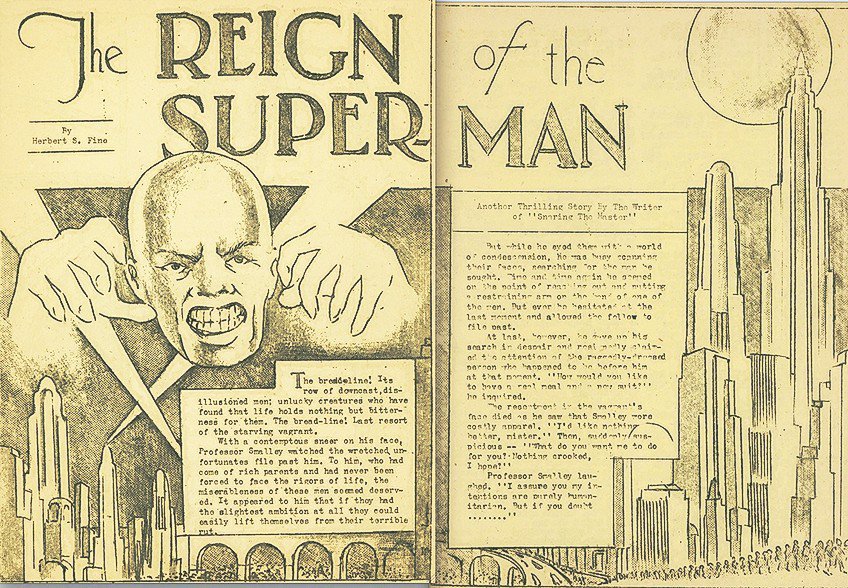
1950s and 1960s
During the 1950s, there was an emergence of folk music and from this several popular zines were published. One of the more well-known figures, Lee Hoffman, was a writer, artist, and editor, who published folk as well as science fiction zines. For example, Quandry (1950-1953), her first science fiction fanzine that ran for 30 issues, and Caravan (1950), a fanzine dedicated to folk music. Artists like cartoonist Robert Dennis Crumb and Art Spiegelman were inspired to begin their own fanzines by other magazines like Mad magazine, which was first published in 1952 and produced its final issue in 2018.
These artists helped to shape the comic industry.
Rock n’ roll zines also became popular in the 1960s. One of the popular zines was Crawdaddy (1966) by Paul Williams. This eventually became so popular that it soon became a full magazine. Star Trek zines also became popular during the late 1960s. The first zine was called Spockanalia (1967). The series was to be canceled after only two seasons, but due to the fans who helped lobby through the fanzines, the show was brought back.
1970s and 1980s
This was the time of punk culture, where punk zines became popular. You could easily go to a copy shop during this time, so the production of zines became widely available. Some of the more well-known punk zines include Sniffin’ Glue (1976), created by Mark Perry. Many of the contributors, such as Danny Baker, became well-known journalists.
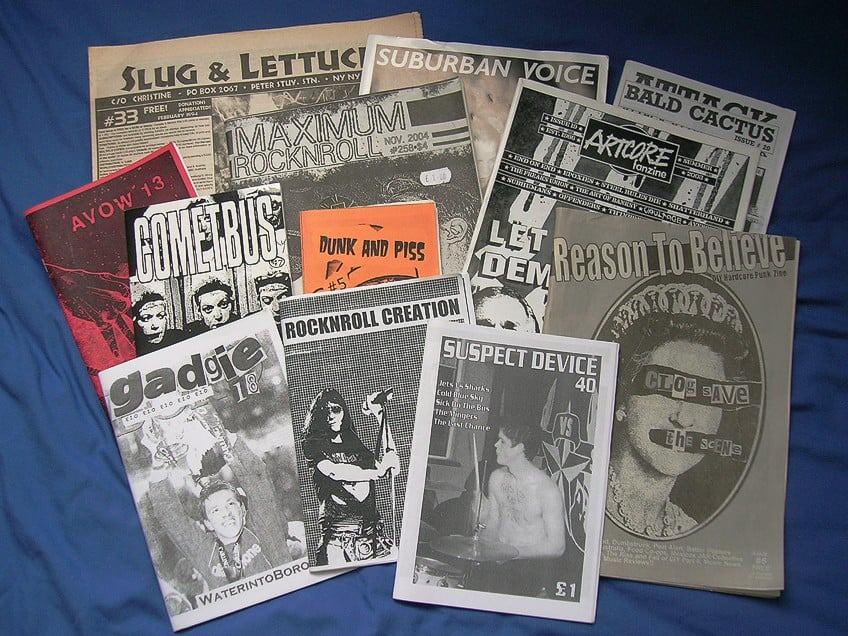
Many of the popular zines mostly came out of New York, Los Angeles, and London. Another example that focuses on the Los Angeles punk scene, is the zine known as Slash (1977-1980), which was published by Steve Samiof and Melanie Nissen. This particular fanzine eventually set the scene for the creation of Slash Records, a well-known punk record label.
1990s and 2000s
From the punk era, the underground feminist movement known as Riot Grrrl came into being during the 1990s. An American punk rock band known as Bikini Kill, with their feminist lyrics, founded the movement. Because of this, many zines focusing on politics and spreading concepts of femininity became widespread and popular. The zines tried to bring awareness to issues like gender inequality and other controversial topics.
The messages from these zines continue to influence many today.
Zines Today
Even with the growth of technology, zines are still popular in both its physical form and now in various digital styles. Today, you can also enjoy zine libraries that collect the zines, or you can visit a bookstore that sells them. For example, the Ontario College of Art and Design (OCAD) in Toronto, Canada has a zine library. Other libraries include the British Library in London, the Los Angeles Public Library, and the San Francisco Public Library, among many others.

Various projects have been implemented to help preserve the zine culture. The POC Zine project was created in 2015 to help people locate zines and other materials related to People of Color (POC). The project has been collecting an archive of past POC zines, but they are also trying to create a collection of present and emerging zine publishers as well. Anybody can create and publish their own zine. On the Internet, there are no restrictions, and you can effortlessly share your thoughts and ideas. There are also many workshops, zine festivals, and clubs you can join.
Examples of Zine Artists
Publishing a zine is the easiest way for a writer to share their work. Zines can be done online, where you can make them available on social media and websites. However, physical zines can be given out at concerts, book fairs, schools, libraries, and bookstores, among many other ways. In many cases, zines were and are free publications that get distributed for many purposes.
However, many today publish zines for money. Below is a short list of some current zine artists.
Cyclista Zine
| Zinester | Christina Torres |
| Location | New York, United States |
| Known Contributions | City Girl Rides |
The Cyclista zine is run by Christina Torres who was born on an Indian Reservation in California. The zine is a collaborative effort that is focused on the cycling industry, where the cyclist culture is seen from different points of view. The zine is printed quarterly and includes stories, art, and even has a podcast, and zine workshops.
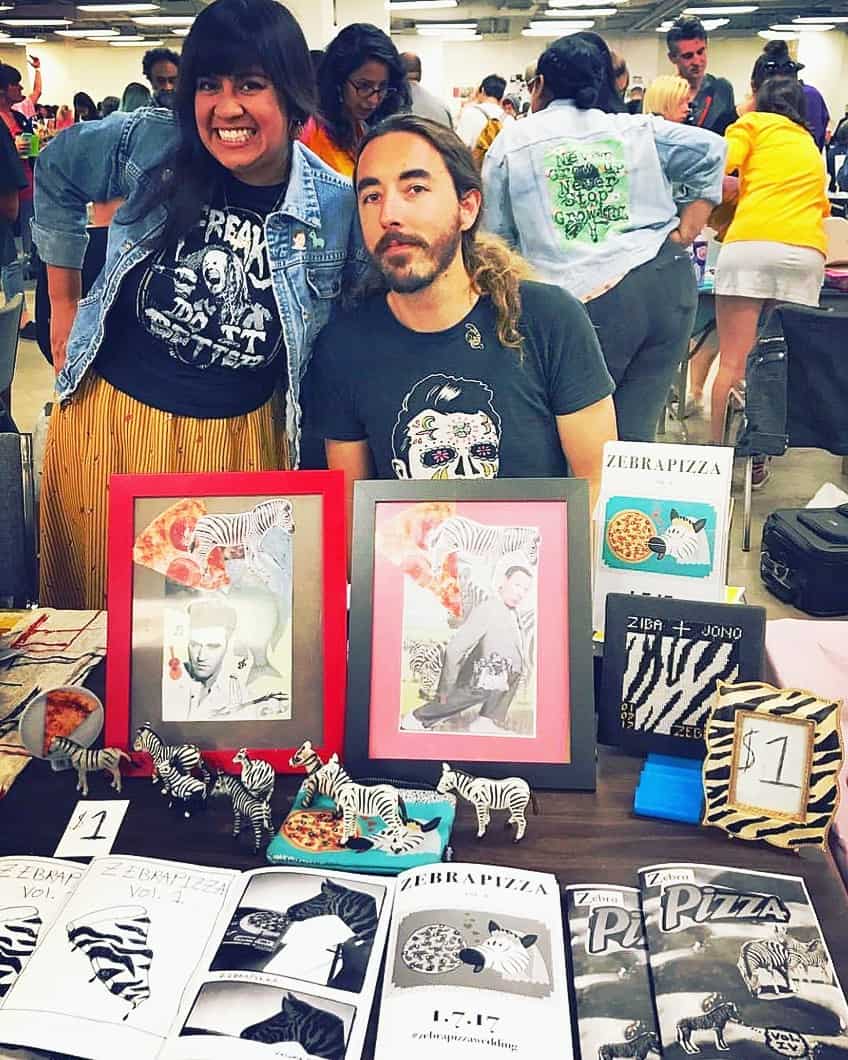
Kate Bingaman-Burt
| Zinester | Kate Bingaman-Burt |
| Location | Portland, Oregon, United States |
| Known Contributions | Outlet studio |
Kate Bingaman-Burt studied as a graphic designer and has become a well-known zine creator in Portland. She does daily drawings or illustrations and is devoted to teaching others about print and media. She founded Outlet in 2017, which is a studio where people can learn and create zines.
The studio is available for people to print their works in higher quantities at an affordable price. There are also workshops and zine library available.
Hunter Ashleigh Shackelford
| Zinester | Hunter Ashleigh Shackelford |
| Location | Atlanta, Georgia, United States |
| Known Contributions | Ugly AF: An Introduction to Desire Politics |
Hunter Ashleigh Shackelford is an artist as well as a writer, who has created quite a few zines and has also written for many other organizations. She uses visual design, illustrations and writing to tell her stories. Her focus is on racism, fat phobia, and other social injustice issues. She is also referred to as “Hunter the Lion”, who has also founded various liberation organizations like Free Figure Revolution.
Why Create Zine Art?
The answer is to see your work in print and to share your work and thoughts with others. Publishing a zine can also help others to be more creative, by sharing ideas. Sharing a zine can also bring people together and connect with others who share the same interests and ideas. Zines can also help to educate, or it can be an easy way to distribute information. Publishing a zine can also be self-gratifying, it can also be something new to create or can help you express yourself. The process is also a good way to improve as a writer or artist.
Creating a zine is an ideal project for students, as it allows them to be creative and express themselves in unique ways.
Zines are also versatile, as you can include writing, art, photographs, images, and illustrations, among others. Creating zines is also a way to develop various skills, such as communication, critical thinking, and learning how to collaborate. Zines can also be used to explore different topics, themes, and ideas. It can also just be something interesting and fun to try.
How to Make a Basic Zine
Zines are quite easy and affordable to make. The zine can be anything you want, from sharing your opinion on serious issues to a collection of zine art you would like to share. Creating a zine can also be something that relaxes you and helps you to tap into your creativity. There are a few ways you can make a zine; a relatively simple way includes using a few sheets of paper of the same size and using staples or stitching the pages together to form a booklet. There are also online flip zines or other online creative tools or programs you can use to create your zine. However, if you want to make a simple foldable zine you can photocopy it, below are some guidelines on how to do it.
Step One
Get a piece of paper, it can be regular printing paper or if you want a smaller postcard-size zine, consider A3 paper. Fold the paper in half lengthwise, and then fold again, making a kind of book shape. Make sure the corners line up nicely and evenly. Make a final fold vertically, making sure the short borders of the paper meet. When opening up the paper, you can see the folds in the paper, which should look like eight small rectangles, four on each side of the paper.
Step Two
Once you have unfolded the paper, place it flat horizontally to you. The eight sections should be visible in the folds. Take a craft knife and make a horizontal cut on the paper, starting from the first fold intersection to the last fold. This means that the cut does not go right through the paper. You can use a ruler to help you cut in a straight line.
You can also try cutting along the crease of the folded paper using scissors. You must just be careful to not cut through the paper.
Step Three
You can now pick up the flat-cut paper and fold it in half along the horizontal line. This produces two layers of paper, with four visible fold sections. Next, push the paper from the sides so that the cut areas bulge out, and this will form a plus shape when viewed from above.
Step Four
From the top, you will notice the two open-cut sections and the closed-page sections in the plus formation. Take the two closed sections and move them over to the right, with the one open folded section in the middle. The other open-cut section can then also be folded over to the right or in a clockwise direction.
Crease the spine of all the pages together, and you should have a four-page black zine template.
Step Five
You can now add your artwork or stories to the zine template. You can use the final result as a single zine, or you can use it as a master copy to create more zines. You can also include more pages if you want, by doubling up on the paper used. The zine can contain whatever you like, and you can even get contributors if you want.
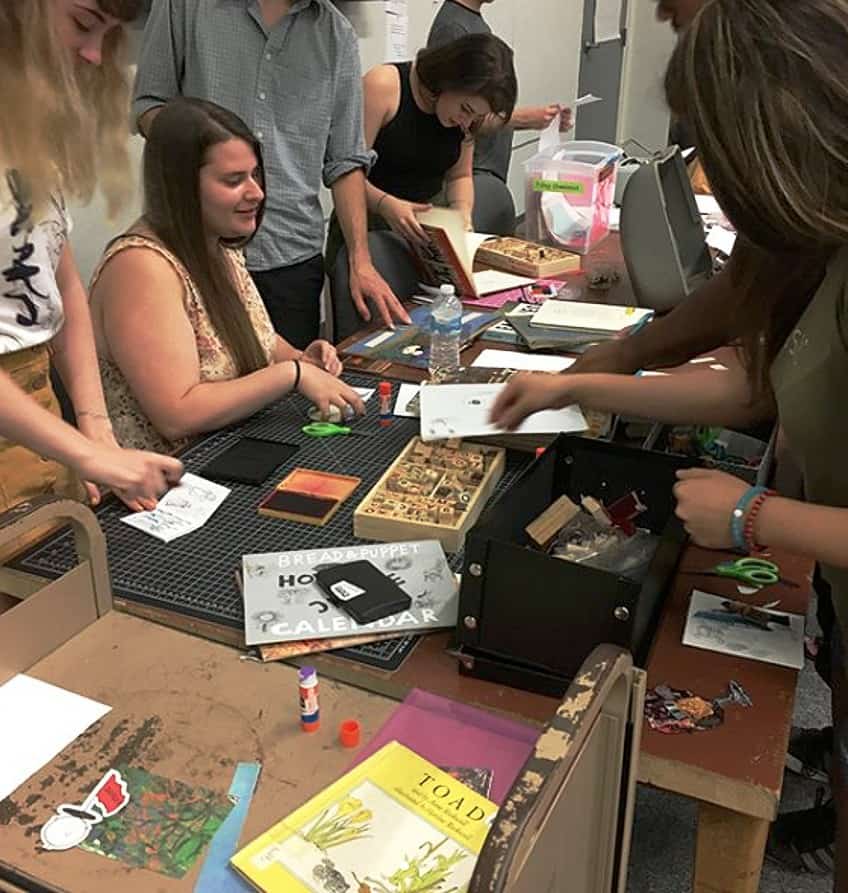
You can add your artwork while the paper is folded, however, you can also unfold the booklet and do everything on a flat surface. Once you are done, you can also use the unfolded complete zine to make copies. Rather use a scanner if you have created a multimedia zine. You can then fold the copies and distribute your zine.
Creating and distributing zines is a global endeavor that can be done in many ways. Zines can be used to spread information about serious issues and social movements, or they can simply be used to share one’s personal thoughts and artistic ideas. It is also a way that zine artists can showcase and share their ideas in an accessible and affordable way. You can even get the kids involved to create their own zine, which is a great way to stimulate creativity. Whatever your purpose, making a zine is a great form of self-expression.
Frequently Asked Questions
What Is a Zine?
A zine, which is short for magazine, is an independent publication, mostly done by individuals or small groups that produce only a few zines at a time. The zines can contain anything from political views to a selection of zine art. Traditionally, the zine is created and then reproduced through a copy machine.
What Are the Criteria for a Zine?
There are no specific rules to follow, as the zine is used as a form of self-expression. However, zines in circulation usually involve less than a thousand copies, and most people create zines for personal reasons and do not seek any profit from them.
How Many Pages Can a Zine Have?
A zine can have as little as four pages and as many as 90 pages. The smallest zine can be created from a single piece of paper, while the larger zines will need to be proper binded.
Jordan Anthony is a Cape Town-based film photographer, curator, and arts writer. She holds a Bachelor of Art in Fine Arts from the University of the Witwatersrand, Johannesburg, where she explored themes like healing, identity, dreams, and intuitive creation in her Contemporary art practice. Jordan has collaborated with various local art institutions, including the KZNSA Gallery in Durban, the Turbine Art Fair, and the Wits Art Museum. Her photography focuses on abstract color manipulations, portraiture, candid shots, and urban landscapes. She’s intrigued by philosophy, memory, and esotericism, drawing inspiration from Surrealism, Fluxus, and ancient civilizations, as well as childhood influences and found objects. Jordan is working for artfilemagazine since 2022 and writes blog posts about art history and photography.
Learn more about Jordan Anthony and about us.
Cite this Article
Jordan, Anthony, “What Is a Zine? – The Underground World of Self-Publishing.” artfilemagazine – Your Online Art Source. November 15, 2023. URL: https://artfilemagazine.com/what-is-a-zine/
Anthony, J. (2023, 15 November). What Is a Zine? – The Underground World of Self-Publishing. artfilemagazine – Your Online Art Source. https://artfilemagazine.com/what-is-a-zine/
Anthony, Jordan. “What Is a Zine? – The Underground World of Self-Publishing.” artfilemagazine – Your Online Art Source, November 15, 2023. https://artfilemagazine.com/what-is-a-zine/.


